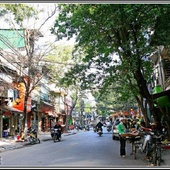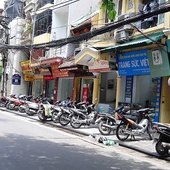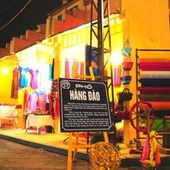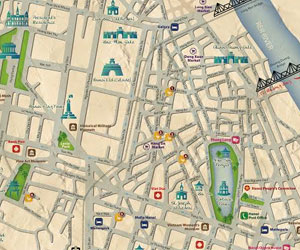Gia Ngu Street
Stretching from the intersection of Hang Be and Dinh Liet to Hang Dao street, Gia Ngu street measures 268 meters in length.
Historically, the area was home to a large body of water known as Thai Cuc Lake, which provided a rich environment for fishing. Local inhabitants relied on the lake’s abundant fish supply for their livelihoods. During the Gia Long dynasty (1802-1819), the street was known as Hang Ca, but it was later renamed Gia Ngu Village under the reign of King Minh Mang. By the late 19th century, Thai Cuc Lake had been filled in.
During the French colonial period, Gia Ngu street was divided into two sections referred to as Gia Ngu alley and Nguyen Du street. Following the temporary occupation, these two sections were merged back into one. In 1945, the government officially designated the name Gia Ngu street. Like many streets in Hanoi's Old Quarter, Gia Ngu is home to Dai Loi temple, which is located at number 50.
Over the years, Dai Loi has become a spiritual sanctuary for the residents of the Old Quarter. Today, Gia Ngu is a quaint street that retains the charm of ancient thoroughfares, featuring traditional houses. In recent decades, the street has transformed, becoming lined with shops offering a variety of fashion items for mothers and babies, as well as other clothing options, attracting both domestic and international shoppers.
Tips

Hang Thung - Street Of Buckets
Historically the place to see and be seen, and still the place to go shop, Hang Thung Street has been challenged by rapid changes and it now becomes quite a miss and match.
0.6km (0.4 mi) from city center
Hang Bac - Street Of Silver
Hang Bac, meaning silver in Vietnamese, is often recommended as one of the most happening streets for a walking tour.
0.8km (0.5 mi) from city center
Hang Dao
Hang Dao today belongs to Hoan Kiem pedestrian zone and is especially animated at night every Friday, Saturday and Sunday with the establishment of Hang Ngang – Hang Dao night market.
0.8km (0.5 mi) from city center













